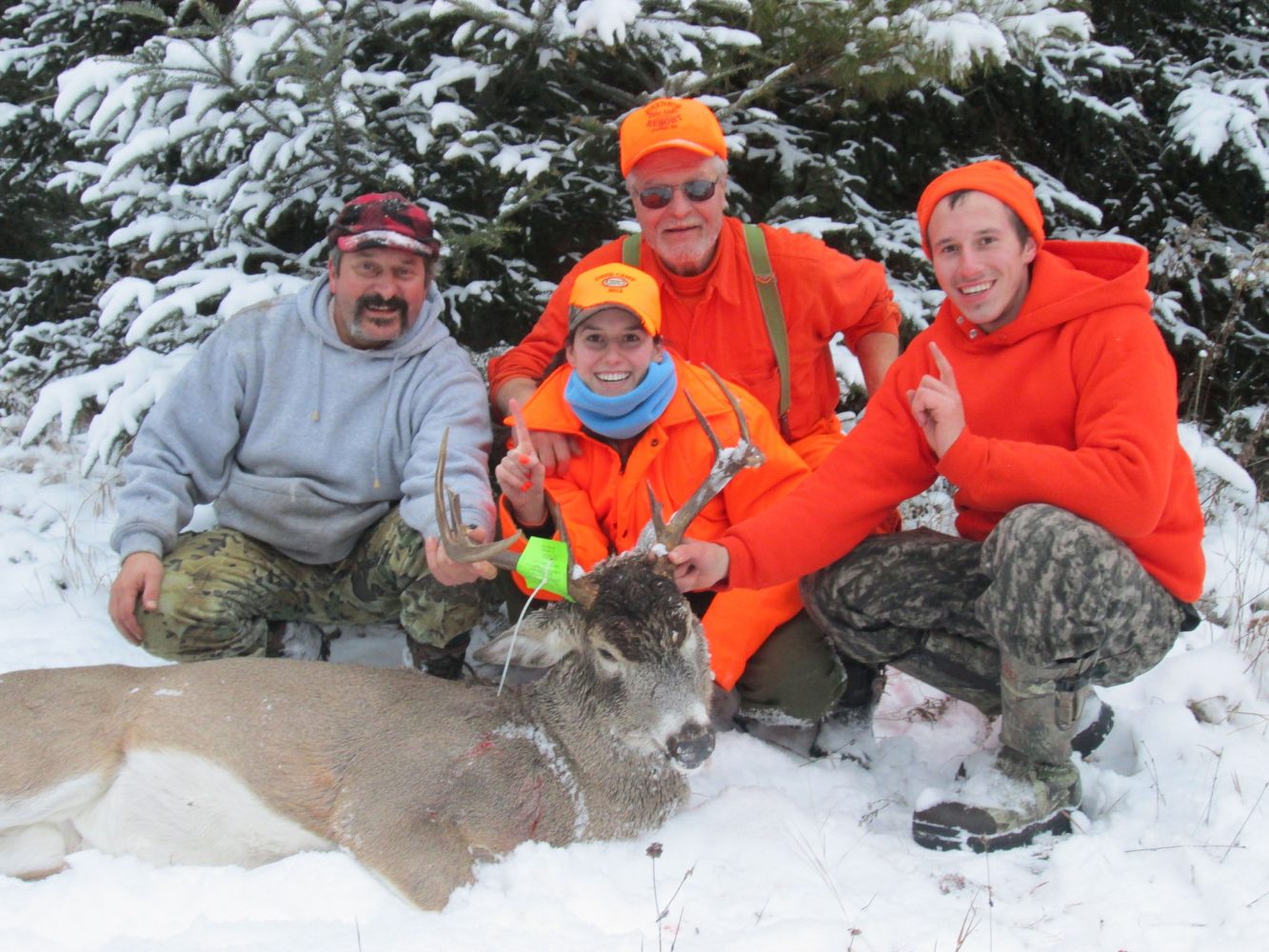Fishing for a fight

A trip to the Texas coast nets a fish and a battle
BY ROGER SABOTA
Special to the Star Journal
Ever since I have been trying to catch fish I have wanted to catch fish that would give me a real battle! Several friends had told me that to get a real battle from a fish one must fish salt water. I found that hard to believe since I have gotten a real battle with salmon, trout and of course muskies. I should have been more open minded.

It’s Roger’s turn! He is pictured here with a 38-inch black drum caught along the shipping channel in Port Aransas, Texas. They weigh approximately one pound per inch.
A fish called black drum has shown itself to be a real fighter. Over the past several weeks my regular hunting and fishing partner the Osseo Jinx, Tom Twesme, and I have found some of these fighters in the waters of the Gulf of Mexico while in Texas. This fish is a bottom feeding fish and we have tangled with quite a few in the last few weeks.
Several weeks ago this column carried information about the black drum fish and a photo of Tom with one that he had caught. At that time I was still waiting. Since then I have tangled with several of these fish and can attest to the fact that they really do fight hard.
We found that we had to use at least 40-pound test line and are using a leader with a breaking strength of 50-pound test. Anglers using anything less than this were breaking lines as they attempted to bring in the fish. Lifting a very heavy 35 to 40-inch fish up onto the wall where we are fishing can also be a challenge.
For bait we use live sea lice. The creator was evidentially mad when he created this small crustacean. Its appearance makes it look ferocious. They are four to six inches long and are hooked through the back on two leaders per line with a sea lice on each. The rods we use are 10-feet long. Some anglers are using 15- foot rods. To launch the bait from these long salt water rods they are thrown out into the shipping channel as far as the angler can send it. The heavy weights that are being used cause the bait to sink to the bottom where the bottom-feeding Drum will find them. The rods are held in place by putting the butt end of the rod into a piece of PVC pipe anchored in a hole in the concrete walkway.
The walkway along the shipping channel is lined with anglers sitting in lawn chairs or on benches, waiting for action. When the tip of the rod moves it is time to grab the rod and set the hook. The fight usually lasts five to ten minutes and is hard on the wrists of the fishermen or women. Usually it takes two anglers to land the fish. One who has control of the rod and another who nets the fish. We are looking forward to do battle with these fish again next winter.
Information about a controversial topic among those involved with fishing, hunting and some environmental groups became available this week. The new Secretary of the Interior, Ryan Zinke, on his first day of work reversed the former Secretary of the Interior, Don Ashe’s, last minute Director’s Order that directed the phase-out of traditional lead-base ammunition and fishing tackle use on all 81-million acres of U.S. Fish and Wildlife Service lands and waters such as wildlife refuges by 2022.
Former Director Ashe issued the order on the last day of the Obama Administration. There had been no input from the states, the public or ammunition and tackle manufacturers. In doing this the question of whether adequate ammunition types would be available to substitute for lead-based ammunition.
As a reminder, the County Deer Advisory Council (CDAC) will meet March 23 at James Williams Middle School from 6-8 p.m. The place of the meeting has been changed from the usual airport meeting room because it is anticipated that there will be a larger turnout than usual.
County Deer Advisory Councils work with local department staff to schedule meetings, provide community outreach and an opportunity for public input, review population data and deer impacts on forests and agriculture, develop three year recommendations on county population objectives and create annual antlerless harvest quotas.
The purpose of this meeting is to review data and form preliminary 2017 antlerless harvest quotas, permit and season structure recommendations. I encourage interested persons to attend this meeting. This meeting does not replace the annual spring hearing meeting that will be held in every county in the state April 10.
Longtime Northwoods outdoor enthusiast Roger Sabota writes a bi-monthly column for the Star Journal.
Leave a reply
You must be logged in to post a comment.




